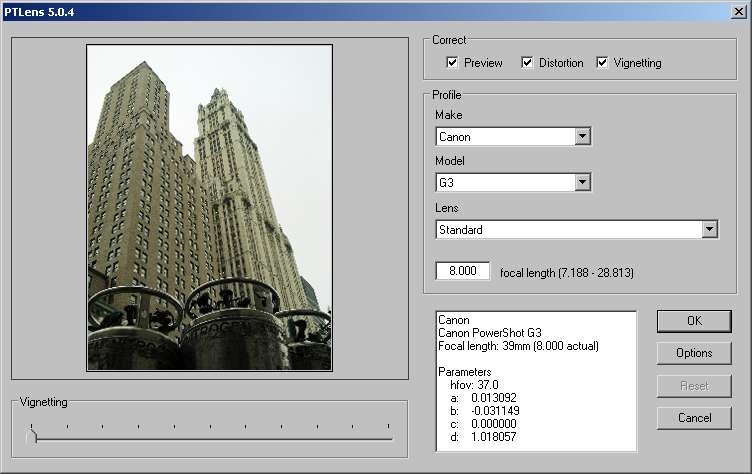

Secondly, radial distortion varies according to the radial distance (r) from the center of distortion (or principal point or center of the image). The geometric characteristics of this phenomenon are, first of all that, it has zero value at the center of distortion, which is identified with the principal point or the center of the image. It occurs due to the fact that the exit angle of the bundle from the optical system does not equal with its angle of incidence. This deformation is an inherent problem of the lens and occurs due to the rotational construction of the elements of the lens.

It is the main reason why the model of the central projection cannot be directly applied to a depiction, in such a way that the geometry of every single capture is expressed as accurately as possible. Seidel deformation or radial distortion (Δr) is one the parameters of deformation of the optical ray inside and outside the optical system. It has been established that the most important deformation of a digital image is caused by the optical distortions caused by the optical system employed, with the most crucial of them being the radial distortion 1- 4. For the applications looking for the capability of obtaining precise and accurate information from an image, the interest is focused on the parameters which deteriorate the geometric accuracy. Especially, this interest is focused on the parameters of deterioration of the visual quality and the geometric accuracy of digital images. A characteristic example of such a phenomenon that has preoccupied the scientific community from the perspective of automation is the various error sources that can affect the image formation process. In this context, it has been attempted to automate many processes in order to facilitate the procedures and to reduce the computational cost. The constant development of technology has opened new perspectives in the fields of Photogrammetry and Computer Vision, making it possible to carry out complex procedures, reduce the computational time while, at the same time, increasing the accuracy. The results of these comparisons are presented and evaluated for their reliability and usefulness. Therefore, a new reliable algorithm has been developed, which was of known and controllable accuracy. However, it was really important to have a benchmark for the evaluation, in order to ensure the objectivity and accuracy of the comparison. The applied methods are (i) the optical evaluation of the produced digital images, (ii) the subtraction of the images, (iii) the comparison of the curves of the remaining radial distortion in the images and (iv) the comparison of the results from the orientation of an image pair. For the attainment of the desired aim, four different methods of comparison and evaluation of the performance of the software, with respect to the correction of an image, have been employed.
#PTLENS SOFTWARE#
Specifically, it has been attempted to evaluate software as the aforementioned, about its effectiveness, accuracy and applicability on the elimination of the radial distortion from images. In this paper in depth research has been conducted about the radial distortion and the methods of its identification and elimination.
#PTLENS FREE#
This effort has reached the point of development of commercial or free image processing software, claiming that it can automatically identify and remove the radial distortion from an image. Lately the interest of Computer Vision and Photogrammetry community has been focused on the automation of the processes of identification and elimination of the radial distortion, with the aim to correct the image coordinates and finally to obtain digital images with reliable geometric information.


 0 kommentar(er)
0 kommentar(er)
